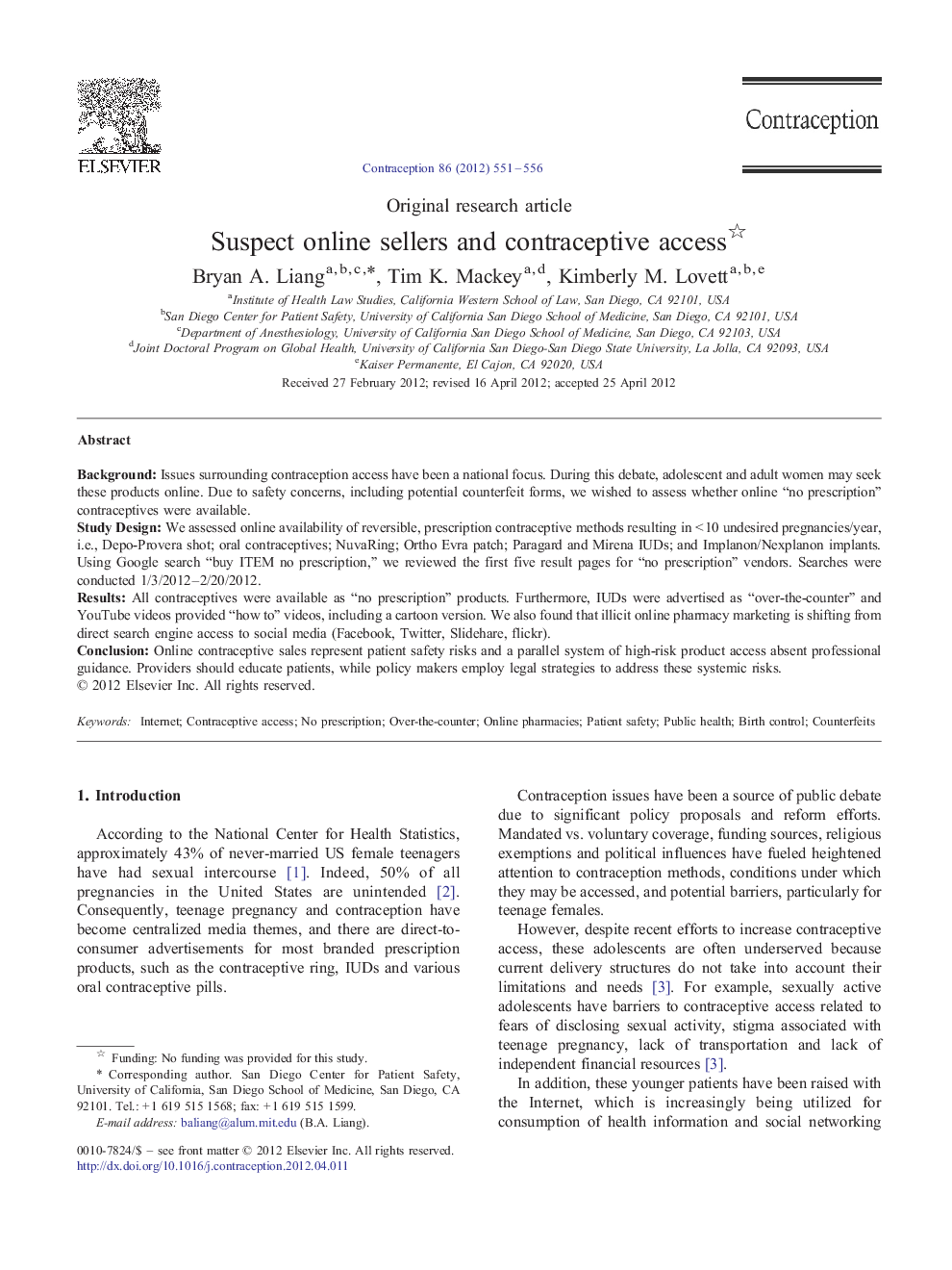| Article ID | Journal | Published Year | Pages | File Type |
|---|---|---|---|---|
| 3914014 | Contraception | 2012 | 6 Pages |
BackgroundIssues surrounding contraception access have been a national focus. During this debate, adolescent and adult women may seek these products online. Due to safety concerns, including potential counterfeit forms, we wished to assess whether online “no prescription” contraceptives were available.Study DesignWe assessed online availability of reversible, prescription contraceptive methods resulting in < 10 undesired pregnancies/year, i.e., Depo-Provera shot; oral contraceptives; NuvaRing; Ortho Evra patch; Paragard and Mirena IUDs; and Implanon/Nexplanon implants. Using Google search “buy ITEM no prescription,” we reviewed the first five result pages for “no prescription” vendors. Searches were conducted 1/3/2012–2/20/2012.ResultsAll contraceptives were available as “no prescription” products. Furthermore, IUDs were advertised as “over-the-counter” and YouTube videos provided “how to” videos, including a cartoon version. We also found that illicit online pharmacy marketing is shifting from direct search engine access to social media (Facebook, Twitter, Slidehare, flickr).ConclusionOnline contraceptive sales represent patient safety risks and a parallel system of high-risk product access absent professional guidance. Providers should educate patients, while policy makers employ legal strategies to address these systemic risks.
